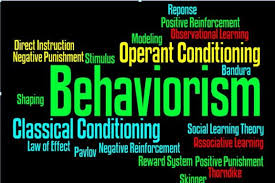- Describe an example from your life of when you were taught using each method described in this article: behaviorism, cognitivism, and constructivism.
- Based on your reading, would you consider your current instruction style more behavioralist, cognitivist, or constructivist? Elaborate with your specific mindset and examples.

Behaviorist education can be applied to children who are receiving some rigid education. This includes but is not limited to, alphabet, numbers, and color recognition. For example, kindergarten teachers would use coloring paper to induce color recognition in children’s minds, because children have no concept of these things, and this knowledge is kind of common knowledge everyone would learn. Making multiple examples for children can let them learn a deeper impression of the corresponding things. Another example, children can learn simple arithmetic skills. Teachers or parents usually use objects that children can understand, such as candy, apples, and pencils as teaching tips, so that children can use their imagination to get that one apple + one apple = two apples, then apply it to mathematics to get the conclusion of 1+1=2. When children receive new knowledge, they do not always remember what they have learned the day before, so teachers need to ask questions repeatedly and practice to stimulate children’s application and understanding of this knowledge until they are fully mastered.

There is little difference between cognitivism and behaviorism, but the emphasis is more on complex cognitive processes such as thinking and concepts. For example, life planning classes teach children how to distinguish between what they can and cannot do. Cognitivism focuses on teaching students psychological morality, adapting to the social order, and giving students a concept and understanding of good and evil in the world. For example, children may be taught from an early age that not to take anything to the supermarket because it costs money to buy the goods. Otherwise, they may think it is free, which will influence their future thoughts and actions.

Constructivism is less about mapping knowledge onto the learner and generating a unique interpretation, depending on the individual’s experience that affects his or her understanding of the world. Constructivism generally expounds some information, which is understood by learners and acquired knowledge based on their own experience or understanding. For example, in an art class, the teacher explains different styles of painting, and the students gradually develop an understanding of a particular style through continuous practice and exploration, while creating their own artworks.
This is my peer’s post and I left a comment, you can take a look if you are interested in it. Link: https://yixian.opened.ca/edci-335_post-1-2/
Recent Comments